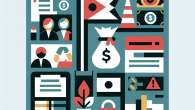
How to Automate Your Investments Without Obsessing Over the Market
How to Build an Emergency Fund Without Sacrificing Your Lifestyle
You hear this advice everywhere: “Build an emergency fund!” And yep, I’m right there nodding, high-fiving, and repeating it like a broken record. But let’s be honest—saving thousands of dollars “just in case life throws a financial tantrum” can sound about as appealing as giving up your daily latte or canceling your weekend brunches. Luckily, you don’t have to choose between financial peace of mind and actually enjoying your life.
I’m Rachel Simmons, your friend with spreadsheets, sass, and a passion for smart, sustainable personal finance. Today, I’m going to walk you through how to build your emergency fund without turning into a minimalist monk. Spoiler alert: we’re keeping the avocado toast!
What Is an Emergency Fund and Why Should You Care?
An emergency fund is a stash of money set aside to cover life’s unexpected financial punches—think medical bills, unexpected car repairs, or that unplanned job loss.
This fund acts as your financial cushion, your buffer between “Oh no!” and total panic. Think of it like your relationship with your phone charger: you don’t realize how valuable it is until the battery’s at 1%.
How Much Should You Save?
Generally, financial experts (yours truly included) recommend having three to six months’ worth of essential living expenses tucked away in your emergency fund. If you’re self-employed or your income isn’t super stable, lean toward six months.
Not sure where to start? Here’s a quick guideline:
- Rent or mortgage
- Utilities
- Groceries
- Insurance
- Transportation
Add those up, multiply by three or six, and boom—target number acquired!
Step 1: Set a Realistic Goal
You don’t need to save $10,000 before your next coffee break. Start with a goal that feels possible—say, $500 or $1,000. This gets your momentum going and makes progress feel achievable.
Remember, you can build your emergency fund in stages:
- Starter Fund: $500–$1,000
- Short-Term Safety Net: One month of expenses
- Long-Term Cushion: Three to six months
Setting mini-goals along the way is motivating and makes the whole journey way less intimidating.
Step 2: Automate Like You Mean It
Automation is your financial fairy godmother. Set up a monthly or biweekly transfer from your checking account to a high-yield savings account—ideally just after payday. Out of sight, out of temptation.
Start small if needed. Even $25 per week adds up to $1,300 in a year—without making your wallet cry. As your income grows or your expenses decrease, increase your contribution.
Step 3: Cut the Waste, Not the Joy
This is the part you’ve been waiting for. Yes, it’s time to trim the fat—but we’re not cancelling girls’ night or your Netflix subscription just yet.
Audit Your Spending
Use a budgeting app or your bank’s expense tracker to spot where your money actually goes. You might be shocked at how much “just one drink” really costs over a month.
Target the Low-Impact Cuts
Instead of skipping fun, try these low-effort savings moves:
- Switch to a lower-cost phone or internet provider.
- Meal prep and pack lunch 1-2 times a week.
- Cancel subscriptions you forgot were still charging you (hello, random yoga app?).
- Use coupons or reward apps for groceries.
Find Fun, Free Alternatives
Your social life doesn’t have to suffer. Host game nights, go on hikes, or check out free community events. Bonding doesn’t come with a price tag—and neither does fresh air.
Step 4: Use Windfalls Wisely
Tax refunds, work bonuses, birthday money from Grandma—these are golden opportunities to give your emergency fund a big ol’ boost. Instead of splurging the entire amount, commit to putting at least 50% into savings.
Still want a treat? Totally fine. Saving doesn’t mean you have to act like a hermit. It’s about balance, not sacrifice.
Step 5: Separate and Elevate
Create a dedicated savings account for your emergency fund. Keeping this money separate from your everyday spending reduces the risk of you “accidentally” dipping into it for that irresistible flight deal to Costa Rica.
Even better, use a high-yield savings account so your money can quietly earn interest while you do literally nothing. (Yes, we love passive income around here.)
Step 6: Treat It Like Insurance
Your emergency fund is not a vacation fund, a sale-splurge stash, or the “oops I overdrafted again” bailout. Do not touch it unless it’s a true, necessary, non-negotiable emergency.
Ask yourself:
- Is this expense unexpected?
- Is it urgent?
- Is it essential to my well-being or security?
If it’s not all three, don’t tap into the fund. You worked too hard for that peace of mind.
Staying Motivated and Making It Stick
Celebrating progress matters. Each time you hit a savings milestone, give yourself a gold star—or a small reward if that’s your thing. Building safety net muscle deserves recognition!
Also, share your progress with a trusted friend or accountability buddy. Public goals = private motivation x2.
Final Thoughts: You’re the Boss of Your Budget
You’re not saving money to punish yourself—you’re saving to protect your future self. When you have an emergency fund, you make decisions from a place of confidence, not crisis. You tell life: “Go ahead, try me.”
Financial independence is built on habits, not luck. And you, my fabulous financially-savvy friend, are more than capable of reaching that goal and enjoying your life while you do it.
Cheers to balance, smart choices, and not panicking when your car makes that weird clunking noise again.
Need more tips on building long-term financial independence?
Check out our About Us page to explore our team’s approach to money, freedom, and lifestyle. Or drop us a message via our Contact Us page—we’d love to hear your journey!









Leave a Reply